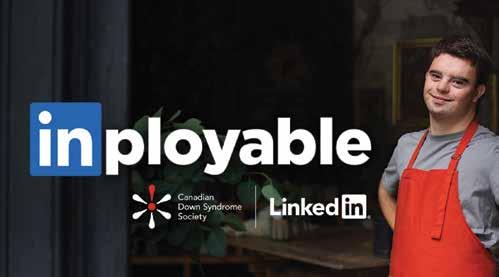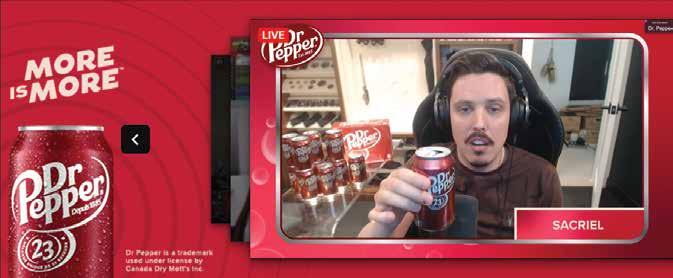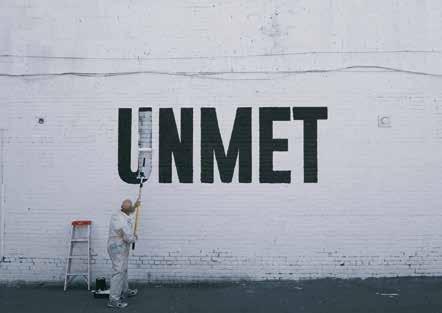
4 minute read
STUFF… LIKE MAKING GREAT WORK
BY NANCY VONK
Tackling the industry’s leadership skills gap for the past 11 years has given me a ringside seat to an ongoing, big, fat universal challenge: most creative departments are too chronically short staffed to handle the workload. Ever since the dot-com bust way back in the early 2000s, a go-to strategy for making the financial numbers work has been ever-shrinking people numbers, each managing the load of two, three or more.
Penalties to agencies for that evergreen “fix” include poor retention, poor quality of work and business lost – not to mention burning people out, mental health problems and broken relationships. And one of the worst long-term side effects? Difficulty landing talent at a place known for hard work and no life.
Just to exacerbate this hellish ‘normal’, there are several common bad processes and habits that frequently suck a huge percentage of hours out of employees’ calendars that could have been used to do the work. And most are perpetuated for no better reason than: “It’s just how it is.”
All of this impacts every creative person. So, whatever your level of seniority, I invite you to slam the brakes on the status quo and get a ton of hours back in your life. Starting right now.
Eliminate 75% of your meetings. For f--k’s sake do we need all these meetings? Ask anyone, anywhere, and you’ll hear the same thing: meeting organization is incredibly wasteful and disrespectful of people’s time. Even pre-pandemic, a good 90% of people we polled said they spent upwards of a full day a week in unproductive meetings.
Insist on being told what the meeting agenda is, as well as the objectives and length. Then you can decide if you even need to be there. Today’s sloppy meeting booking systems tend to assume all those invited will come. Give notice to meeting organizers that, if your attendance is important, you need to be asked if you are available before scheduling. Say “no” without flinching when you have a higher priority.
Maybe your whole team could work together to tackle smarter meeting practices? At our very first Swim program, senior creatives who worked every night and weekend (because they spent all day, every day in meetings) did just that. Just by declaring a very reasonable three-hour daily limit and no-meeting Thursdays, they got 60% of their time back to do stuff like… their jobs, save a marriage, etc. Their meetings boundaries led to shorter, fewer and better organized meetings.
Take half of the “it’s-on-fire!” list off your plate. Take a deep breath and objectively look at your to-do list through the lens of what’s actually urgently needed and what could wait or be given to others. Most often, a bunch can be moved off the front burner and some tasks removed entirely. Are you really the only one who could do it? How much could you delegate? Bear in mind, everyone pressuring you thinks their need is urgent and nearly all of them could usually buy more time or find someone else. Have the conversations that will open up big chunks of time. You can do this.
Sell your best idea in one meeting. It’s “normal” to have two, three or even many more rounds of presentations before finally selling your solution, right? And yet, most of that wasted time and effort is avoidable when you: process of generating ideas. Challenge yourself to crack a problem wide open at lightning speed. We’ve seen it in action countless times, even applied to “impossible” challenges. Work in a small, diverse groups or pairs with only 20 minutes to generate a pile of ideas. The lack of time to overthink is the key: your inner editor is prevented from killing ideas that could be great. More is more. And it puts the fun back in the hunt for solutions.
...Show your client embryonic thinking. I don’t mean “tissue meeting.” I’m saying right after the very first brain dump. The only goal being to hear their gut reactions. Get their input when it’s genuinely helpful: When nothing is for sale. When there’s no detail to latch onto.
...Share tons of formative ideas/areas – just scribbled thoughts, no reference material, no copy, no production details of any kind. This will help you get to the best ideas, which the client will more likely buy at the formal presentation, having some pride of contribution and feeling included in the process.
An intern given 20 minutes to crack a brief came up with one of Ogilvy Toronto’s most effective, awarded campaign ideas ever. Just saying. (Pro tip: read about speed thinking techniques in Tom Monahan’s book, The Do-It-Yourself Lobotomy.)
Ban distractions in client meetings. (i.e. no phones.) The gravitational pull of your device can take you straight to extra rounds of work. You can’t be glancing at it and fully take in what’s being said, which translates to acting on incomplete/misunderstood information, then the do-over meeting when your solution doesn’t reflect the feedback. (P.S. It’s rude. Yes, even if they do it, too. One more reason your idea may die.)
Most clients sing the same song: agencies don’t want them to participate in their process beyond an absolute bare minimum. And, if they don’t agree with the recommendations at the Ta-da! presentation, the agency thinks they’re assholes. (I remember feeling shocked the first time a client told me that, in answer to my question: “Why are you firing us?”) Rehearse. Rehearse. Rehearse. That old timey technique that went out the window years ago because of “no time.” Of course, it will eat up a lot more time to go back to the drawing board when your poorly articulated presentation flames out. Being prepared isn’t a frill. So often “no prep” means “no sale.” Make the time, every time, to pull together your best story and rehearse it.
Stop overthinking, start underthinking. Advertising is plagued by overthinking – it gums up decision making and even the
You may be suffering from many other needlessly calendar-crushing practices when you think about it. If you don’t have a senior title you may think it’s someone else’s job to sort out. While you’re waiting for that to happen (and waiting, and waiting), test drive a new way that makes more sense to you. No, you won’t get fired for it. You might even get promoted for it –when it works better for everyone.
Nancy Vonk was co-CCO of Ogilvy & Mather before cofounding the Swim leadership lab in 2012 with her long-time creative partner Janet Kestin. She and Janet are authors of Pick Me and Darling You Can’t Do Both (And Other Noise To Ignore On Your Way Up). They are recipients of two Cannes Grand Prix, the Les Usherwood award, the Marketing Hall of Legends award, Hall of Marketing Gold award, and were inducted into the One Club for Creativity’s Hall of Fame in 2022.









